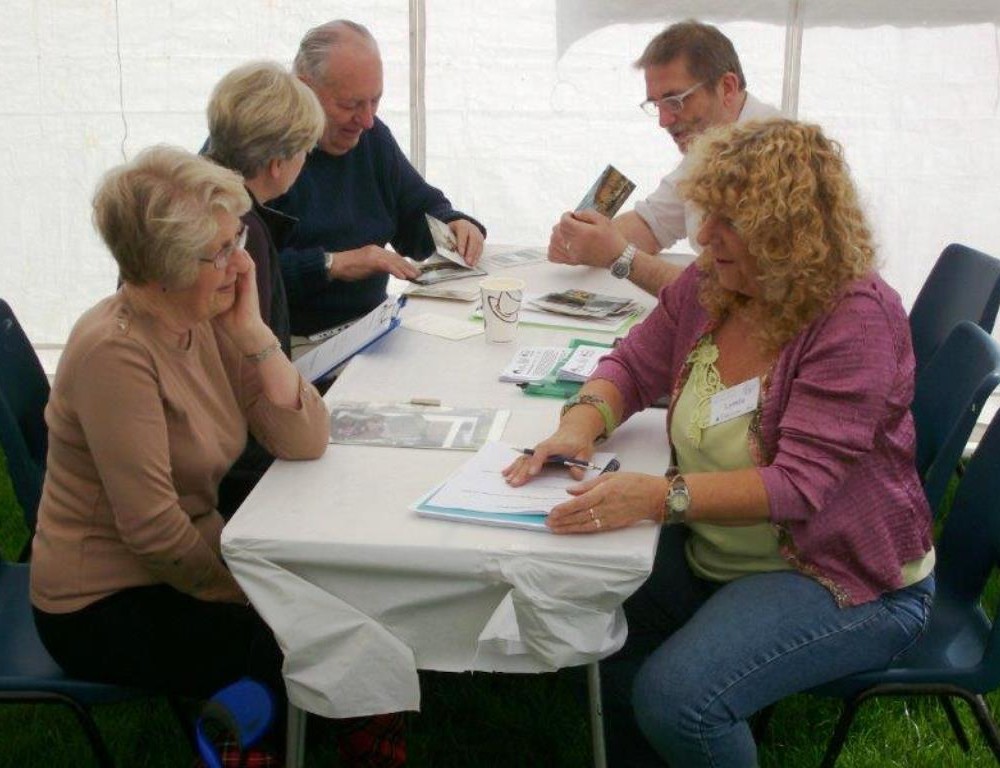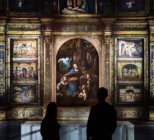Most people enjoy a good story and are naturally curious about the lives of others. Feed this curiosity when creating your visitor interpretation.
At Fitzpatrick Woolmer we strive to create interpretive media that will ‘engage’ visitors – make a connection, strike a note, have relevance and meaning. If we want people to think more deeply about what they’ve experienced and relate it to their own lives, then making those connections on a personal level is a good place to start.
Whatever we’re interpreting, be it an object in a museum, a beautiful view or an historic building, we should explore the human associations with that object or place as well as the factual information about how old it is, the materials it’s made from etc.
A myriad of questions spring to mind:
Who lived here?
Who worked here?
What was their daily routine?
Who designed it? Who made it?
What special skills did they need?
The lives and activities of everyday people become as important as the historical figures who more often feature in interpretation.

Beyond living memory – where to start?
If the human associations with your subject matter stretch well beyond living memory there are two approaches you could take to gathering personal stories:
- Exploring Archives
Searching for written accounts of personal experiences can be time consuming, but can also uncover a treasure trove of material written in the language of the day. At Hopton Castle in Shropshire a blow by blow account of a bloody Civil War siege, written by Samuel More who was garrisoned inside the castle, provides a moving first-hand account of the terror and determination of a handful of poorly armed men as they faced an army of Royalist soldiers. Samuel More’s words have been used to good effect in on-site interpretation panels and a short film, accessible from the Hopton Castle website.
- Recording Responses – what do other people think?
Asking current-day visitors to explore a site, or study an object, and then share their impressions, thoughts and ideas generates a surprising range of responses that can be used to trigger further responses in others. This approach is sometimes used in museums and galleries where visitors are invited to select and interpret objects that appeal to them. Their interpretation is very personal and offers an intriguing insight into what makes objects special on a variety of levels.
Within living memory – capture the stories before it’s too late
If there are people still living who may have memories, experiences, or stories linked to the subject of your interpretation there’s no time like the present to capture these on film and audio. But first you’ll need to find the best people to interview.

A good way to start is by organising a Reminiscence Day event.
Invite local residents to a display about your project and bring with them any photographs, objects or other relevant memorabilia.
- Create a relaxed and friendly atmosphere, with plenty of free refreshments.
- Have plenty of volunteers on hand to greet and chat to people.
- Create a recording sheet to write down the main points of their stories along with their contact details.
- Encourage people to sit together in groups – it’s amazing what memories are triggered when people start chatting together.
- Take along props, such as objects or old photographs, to trigger thoughts.
- Have old maps available for people to locate the places they are talking about.
A laptop and scanner will be useful to copy photographs or documents, but don’t forget to ask people to sign a consent form if you plan to reproduce these in your interpretation.
At the end of the day you should have a list of candidates for oral history recordings.
Don’t try to make the recordings on the same day as the Reminiscence event, you’ll be too busy to do it properly.
Arrange a separate session with each person, somewhere quiet where you can make film and audio recordings. You’ll also need time to plan the interview to make sure you ask the right questions and get the most out of the recording session.
Don’t forget to ask participants to sign a consent form. If you plan to use the content in your interpretation, you’ll need their written agreement. Your local archive may also be interested in receiving copies – they may have their own consent forms.
Training and funding are available for recording oral histories.
Details can be found via the Heritage Lottery Fund (www.hlf.org.uk) and Oral History Society (http://www.ohs.org.uk).











